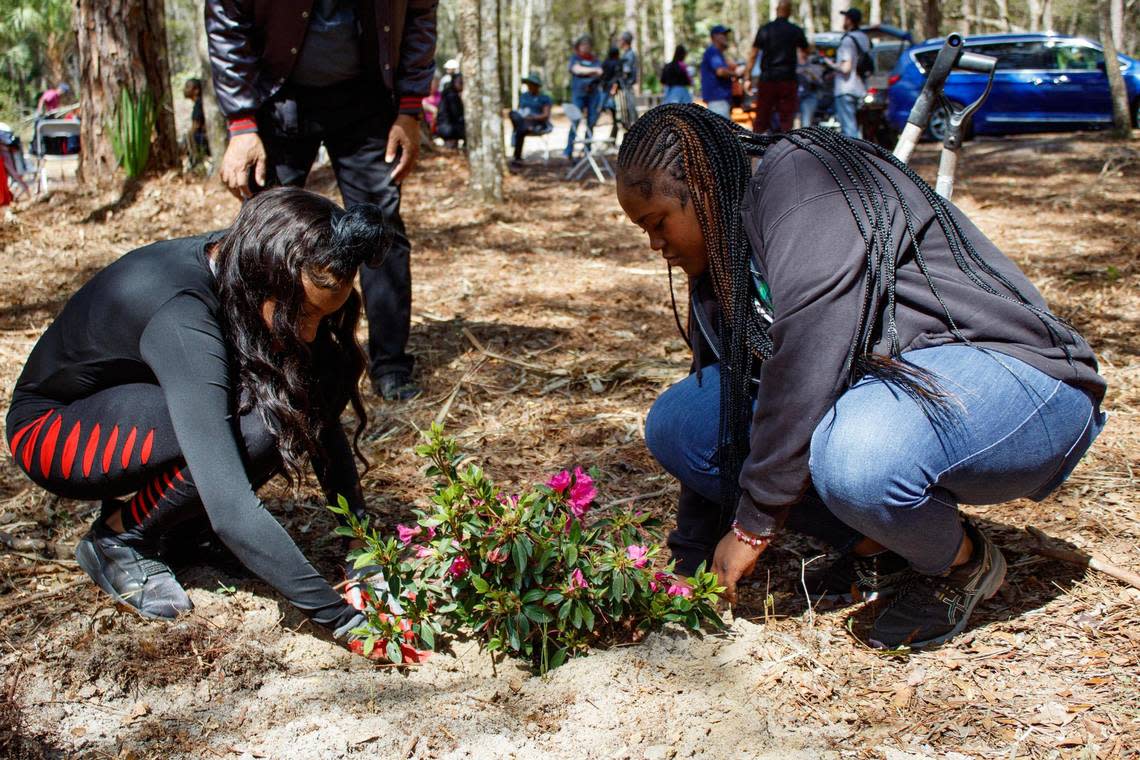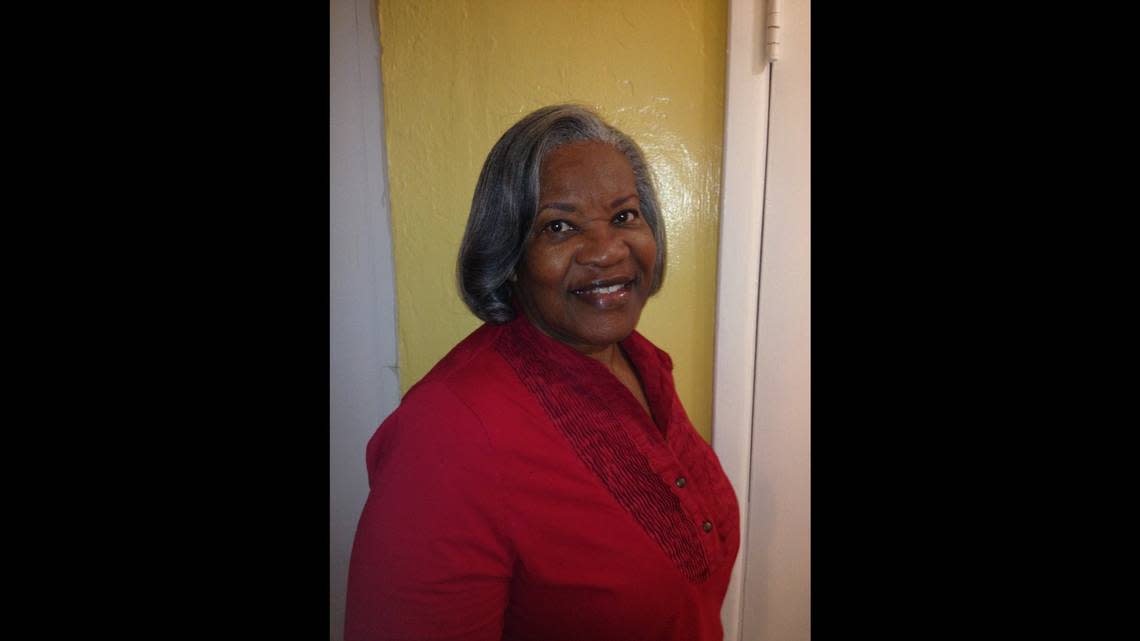The stories were hard to hear about Florida’s past racial violence, but I found hope | Opinion
I took a trip to Rosewood, Florida, last weekend and along the way, I walked into the past. What I saw wasn’t pretty. But it is a part of the history of our state. And it must not be buried.
So, early in the morning of March 4, I along with more than 40 others, including reporters from several news outlets, boarded a bus that took us on one of Marvin Dunn’s “Teach the Truth” tours.
The tour took us back to some of the darkest times and places in Florida’s history. If you ever have a chance to go on one, be prepared to feel an explosion of emotions, from anger to hurt, to extreme sadness. But even while experiencing multiple emotions, one thing stands sure: This is our history — and it needs to be told.

The tours are Dunn’s answer to Gov. Ron DeSantis’ decision to water down and, in too many instances, simply rip out Black history from the pages of history books. The governor’s move can eventually erase history, especially our Black history, from the minds of all Florida children, and later, perhaps the entire country. As if it never happened.
READ MORE: ‘We need to hear it.’ This tour explores Florida’s horrific history of racial violence
Yet, Dunn made a point in reminding us that these tours are not about making someone feel guilty. Or even angry. They are about teaching and preserving our history.
He made a point to remind the group of white people like Wendell Owens and others who joined us at the property that Dunn and a partner had purchased and cleared. The men brought shovels and buckets of roses and azaleas and helped the young people on the tour plant them. It was good to watch whites working alongside Blacks at a place where once strife and hate lived.
We made a couple of stops on the way to Rosewood, where the plan was to plant flowers on the cleared property, which will one day be a memorial park.
Desire to vote led to his lynching
The first stop was Orlando, where we visited the grave of Julius (July) Perry. We got off the bus and followed Dunn through the grassy flatland that was dotted with graves until we got to Perry’s grave in Greenwood Cemetery, one of Orlando’s oldest white cemeteries.
At Perry’s gravesite, Dunn motioned for me to join him. We touched Perry’s grave, and I couldn’t stop the tears that welled up in my eyes. He spoke briefly:
“…This tells the story“, he said, pointing down at Perry’s gravestone. “July Perry was not poor. He lived in Ocoee, where he owned orange groves and hired other Blacks to work for him.
In 1920, July Perry decided to vote. He goes to the polls and was turned away. He then goes to see the local judge who told him to go back to the polls. He is still denied the vote and goes home. Later a deputy sheriff goes to July Perry’s home to find out what happened. There was a shoot-out. The deputy, and another white man, were killed at Perry’s home.
“The story was that Perry killed the men. He didn’t. Shots were fired into his house by an angry white mob that had formed outside. The two white men were killed in a hail of fire that came from outside. Perry was blamed for their deaths, was arrested, and taken to jail, where he was later dragged out by the white mob and lynched…”
The Rev. Richard Dunn II (no relation to Dunn) walked over to the tombstone to pray. “I feel like Moses at the foot of the mountain, when God told him to take off his shoes because the ground where he stood was holy…”
The reverend prayed: “… Thank you, God, for July Perry, for his courage, for his dignity, for his persistence, and for his fearlessness… Lord, you have brought us from a mighty long way, and we don’t have to be afraid anymore… Nothing or nobody will turn us around.”
He ended his prayer by leading the group in singing the old civil rights anthem, “We shall overcome.”
As we made our way back to the bus, I felt like we had been flung back in time to the early civil rights era. As the bus made its way back to the main highway, there was an eerie silence on the bus. Marcus Green, one of the young members of the group who was being interviewed by one of the news people said, “I can feel what he [Perry] went through.”
Indeed, we all could feel the spirit of July Perry and his pain.
Shackled, forced to jump in river
Our next stop was Live Oak, the Suwanee River, and the gravesite of Willie James Howard, a teenager who was lynched in 1944. His crime? He wrote a love note to a white girl.
Willie James, only 15 at the time, was pulled away by several white men as he clung desperately to his mother’s legs as she sat on their front porch. He had run home because he had heard “they” were after him. His mom couldn’t save him.
The men forced him into their car and drove off. His mother ran after the car screaming for her child. The kidnappers stopped by the plant where Wille James’ dad worked and made him come along.
At the bank of the Suwanee River, Willie James was tied up, hands and feet shackled, and forced to jump into the Suwanee River while his dad watched helplessly.
I was six years old when Willie James was lynched. But that day at his grave, I stood as a mother of sons. I thought of my sons as teenagers, having their first crush. I put myself in Lula Figgs Howard’s place. And I wept.
We would not even know about Willie James, had it not been for Douglass Udell, a Black mortician who bought the funeral home from Ansel Brown, another Black undertaker in Live Oak. Brown had buried Willie James in an unmarked grave in the Eastside Cemetery, by order of the sheriff of Suwanee County, the day after he was lynched.
Through the funeral home’s records, Udell, a Vietnam veteran and the father of sons himself, found Willie Howard’s grave. And 79 years after he was lynched, Udell arranged for Willie James to have a proper funeral. He even ordered a gravestone for his resting place.
Under Willie James Howard’s name, and the dates of his birth and death, an inscription on the headstone reads: “Murdered by 3 Racists.” Udell said he had to search for a company willing to include the inscription on the headstone.
Rev. Dunn prayed, and we sang “Amazing Grace.” Back on the bus, traveling along a quiet road, I noticed for the first time how the terrain had changed. The palm trees, with their graceful fronds, had been replaced with tall oak trees, draped with Spanish moss, giving them a haunting look. I wondered, how many Black men and women had hung from trees just like these.
We stopped overnight in Lake City. The next day we boarded the bus to Rosewood. I wasn’t sure how I would feel when my feet touched the ground where once progressive-thinking Blacks had carved out a comfortable way of life for themselves, living near whites in Sumner without trouble until the Rosewood Massacre in January of 1923.
By the time we arrived in Rosewood, it seemed like the stories of July Perry and Willie James Howard were stories from a bad dream. Fresh from a good night’s rest, we were ready for the work ahead.
We first visited the gravesite of J. W. Wright in the Shiloh Cemetery in Sumner, which is about two miles west of Rosewood. A store owner, Wright and his family were the only whites living in Rosewood. He is deemed a hero because he saved the lives of several Blacks during the massacre, by hiding them in his home.
At the newly acquired Rosewood property, the young people planted the rose bushes and azaleas, giving new life to the area, while we older folk sat along the old railroad bed and talked.
I looked up at the tall trees around us. If only they could talk. The ground below them was littered with the trees’ dead leaves.
A gentle breeze rustled and it seemed to rain leaves again. I looked closely at the ground and saw a tiny oak tree pushing its way through the leaves covering the ground. The new oak tree seemed to signal a new beginning.
Watching Black youngsters working alongside older white men to beautify the Rosewood property, I felt the spirit of a new beginning.
And I thought of another old civil rights fight song:
“Ain’t gonna let nobody turn me ‘round, turn me ‘round, turn me ‘round… Ain’t gonna let nobody turn me ‘round, gonna keep on talking, keep on walking, walking up to freedom land…”

